Sep 21, 2024
Ten Types Of Human
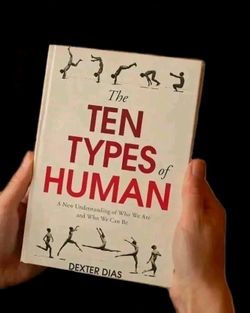
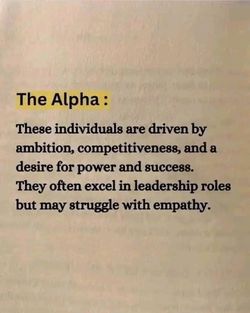


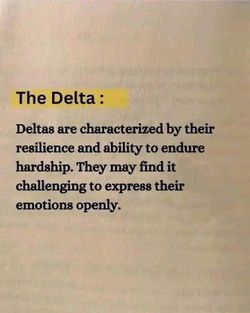


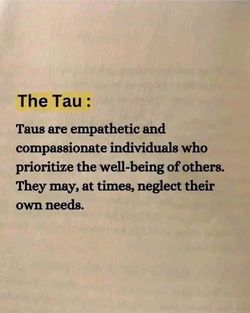
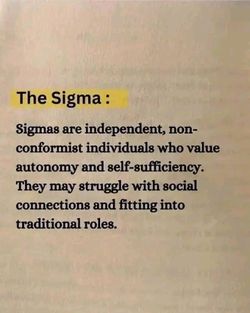

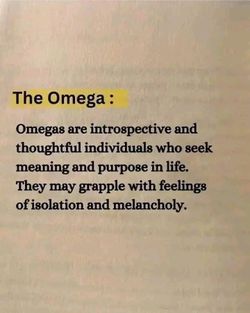
The Ten Types of Human: Who We Are and Who We Can Be
This book will introduce you to ten people. In a way, you already know them. Only you don’t – not really. In a sense, they are you. Only they’re not entirely. They inform and shape the most important decisions in your life. But you’re almost certainly unaware of their intervention. They are the Ten Types of Human. Who are they? What are they for? How did they get into your head?
We want to believe that there are some things we would never do. We want to believe that there are others we always would. But how can we be sure? What are our limits? Do we have limits?
The answer lies with the Ten Types of Human: the people we become when we are faced with life's most difficult decisions. But who or what are these Types? Where do they come from? How did they get into our heads?
The Ten Types of Human is a pioneering examination of human nature. It looks at the best and worst that human beings are capable of, and asks why. It explores the frontiers of the human experience, excavating the forces that shape our thoughts and actions in extreme situations. It begins in a courtroom and journeys across four continents and through the lives of some exceptional people, in search of answers.
Mixing cutting-edge neuroscience, social psychology and visceral true stories, The Ten Types of Human is at once a provocation and a roadmap of the hidden parts of us. It is a book to inspire; to refashion our understanding of our many selves and semblances; and ultimately to find fresh ways to be free.
The Ten Types of Human: Who We Are and Who We Can Be
For me this was up there with Sapiens: A Brief History of Humankind for books which have the capacity to make you see the world and yourself differently. Wonderfully well written this is the most addictive non-fiction book I have ever read, there were times when I couldn't put it down. Blending seamlessly together personal stories, biographies, scientific research, philosophical ponderings, psychological experiments and historical examples the author paints a convincing case for why humans are who we are but also how we could possibly make ourselves kinder, more compassionate, braver, more understanding and all round better human beings. At times heart-breaking and hard to read you are none the less left with a feeling of hope, and the realisation that changing the world is possible even one tiny act at a time. A book I would highly recommend anyone to read.
About Dexter Diaz
Dexter Diaz is a prominent human rights lawyer in the UK. Once he was representing the mother of 14 year old teenager who died in custody while being retrained by 3 officers. The boy was the youngest person died in such a way then. His mother could not comprehend how it could happen. And Dexter could not explain it then. This hefty tome is the result of his quest to understand the human nature. So much he wanted to be able to answer this question that he went to Harvard to study moral cognition (new science combining neuroscience, experimental and evolutionary psychology). He also travelled widely.
10 Type Of Human
The book is a combination of individual stories and his findings including the proposed psychologic theory. The individual stories are all related to so-called human rights violations form child slavery and using child soldiers in war zones to human trafficking and female genital mutilations. Also, he investigates such dilemmas like the right to die. On another hand, he presents findings from the labs in experimental psychology investigating the human nature. He is extremely curious and erudite individual. So the book is peppered with a lot of sometimes tangental but always very interesting information starting from life of the Gobi fish and finishing with the nostalgia experienced by Frederic Chopin.
At the core of the book is a theory that our actions are driven by 10 types of our behaviour. Those types are the models within our brain that get activated depending on the actual situation. And this activation is leading to a series of our actions. These types evolved with the evolution of a human. I do not want to mention all ten, but I give a few examples. Kingsman - the type which makes us to select and protect our kin as opposed to others. Parents-child is the obvious example. And Dexter starts the book with posing a relatively well known dilemma: if you need to make a choice during the school shooting whom would you safe: only your child or 40 other children except your child? Another example is a Romancer - again pretty obvious. But for whatever reason, expressed more in men than women. Dexter shows the study when men were happy to spend much more money on-line when an attractive female was present silently in the room. But not wise versa. That, together with another factors, has lead to the conclusion that there is a romancer in us ready for sacrifices to safe (not always successfully) a beloved. The third example, less obvious is “The beholder of beauty”. He claims that just born babies can recognise beauty. And, growing up some of them could become criminals if the perceived beauty does not belong to them. He illustrates with the men ordering acid attacks on the girls who previously rejected them. I found it much less convincing - strange feeling of beauty. There are another seven types from Rescuer and Nurturer to the Tamer of Terror.
10 Type Of Human
This theory is not new of course. Even Jung was talking about something similar ages ago. What is new is that Dexter tries to bring about the evidence from the lab for this and the evolutionary nature of this. I have to admit I am very sceptical in the explanatory power of this model beyond what is obvious. Plus Dexter drives home the idea that our brain is responsible for our mind. We sort of all suspect this. But sofar no-one knows exactly how. It is the famous mind-body problem which has not been solved. So when for example Dexter brings neuroscience into this and tells that the pain of the others activates the same neurological network as our own pain, I am not convinced that I can project it into something called “The Perceiver of pain” , the one of his types. I also have a problem with the idea that the one of those types prevails in a concrete situation. It is somehow deprives us of the agency. “It is an an evolutionary aggressor in me who hit you. I am sorry” type of thing. I know Dexter probably means the opposite. That I should try to tame that aggressor type. But then we are going meta level “Who is I?” And his theory somewhat looses its explanatory power again.
Additionally, I doubt that some findings revealed in the artificial experiments of Western campuses would hold on a battlefield in some African country.
But in spite of all these reservations (and it would be one more at the end), I liked the book. The strongest part for me were the individual stories and human rights issues. Dexter takes us to such places we would not think of. Also he makes some issues, looking abstract to us (well at least to me) looking very much concrete. He introduces us to a boy called Anthony from Ghana who was sold into slavery by his own father. And Dexter shows all complexity of this situation. In another story, he takes us to Central African Republic. He is right when he says not many people even know about its existence. I did not. And he tells the story of three very different people dragged into never ending conflict there. In other stories, he brings attention to acid attacks, HGMs, trafficking and children prisoners and many other issues. He also for example visits Haiti to talk how people (predominantly women) survived the violence in the aftermath of the earthquake. A few times, I was afraid that the book was dragging into the territory of the sensational. But he timely put his foot on the brake.
10 Type Of Human Part 3
When I was reading the book, I was wondering why it was not nominated on any prizes. It is fashionable now to write and read a hybrid fiction/non-fiction works. But for whatever reason, it is more popular when a writer of fiction introduces factual information in her works. At this case it is the opposite - it is definitely the work of non-fiction. But Dexter uses the whole toolbox of the fictional writing here. For example, the direct speech, dialogue and “being in the head of a character”. There are many example where Dexter would not be able to know in such a detail what his characters were talking about - before a battle for example. But he is bold in applying the fictional toolkit to make his writing more vivid. And it is vivid. How accurate it is? Sometimes I doubted this. For example, there is a story about the Russian boy “disciplined” by his PSD suffering father by holding him below the water level in a sink. I was not sure how it really took place. Unlike in the UK, they only very rarely would have a plug in a sink in Russia. Normally the water would float through without staying in the sink at all. So there are such details. But I think he has put a lot of efforts to convey the jest of situations accurately. At least I want to believe him. And the nature of these tales is such that the narrators, his interlocutors, cannot be always reliable after going through all that traumatic experiences.
In spite of some reservations, I really recommend this book. It is that kind of book to read and argue with loudly in the empty room. Or silently agree with. It is full of interesting ideas and It is good for discussion, even with the children. Later, I’ve listened Ito t in the car with my family and we had some interesting arguments about it. And though I sometimes felt somewhat irritated with Dexter’s persona, the people populating it would stay with me for a long time.
Here's a summary of the book:
In "The Ten Types of Human," Dexter Dias delves into the diverse spectrum of human experiences and behaviors, seeking to provide a deeper understanding of who we are as individuals and what drives our actions. The book introduces ten distinct psychological types, each defined by specific traits, reactions, and thought patterns. These types are:
1. The Alpha: These individuals are driven by ambition, competitiveness, and a desire for power and success. They often excel in leadership roles but may struggle with empathy.
2. The Beta: Betas prioritize connection, relationships, and emotional intelligence. They excel at forming deep bonds with others but may struggle with assertiveness.
3. The Gamma: Gammas are creative, innovative thinkers who embrace change and adaptability. They may, however, wrestle with feelings of insecurity and self-doubt.
4. The Delta: Deltas are characterized by their resilience and ability to endure hardship. They may find it challenging to express their emotions openly.
5. The Omega: Omegas are introspective and thoughtful individuals who seek meaning and purpose in life. They may grapple with feelings of isolation and melancholy.
6. The Sigma: Sigmas are independent, non-conformist individuals who value autonomy and self-sufficiency. They may struggle with social connections and fitting into traditional roles.
7. The Tau: Taus are empathetic and compassionate individuals who prioritize the well-being of others. They may, at times, neglect their own needs.
8. The Iota: Iotas are characterized by their adaptability and resourcefulness in the face of adversity. They may struggle with indecision and a lack of direction.
9. The Kappa: Kappas are analytical and logical thinkers who excel in problem-solving. They may have difficulty expressing their emotions and connecting with others on an emotional level.
10. The Lambda: Lambdas are spontaneous, energetic individuals who embrace novelty and excitement. They may find it challenging to maintain stability and routine.
Through engaging narratives and case studies, Dias explores each type in depth, showcasing real-life examples of individuals who embody these characteristics. The book goes beyond traditional psychology to offer a multifaceted perspective on human behavior, shedding light on the complex interplay of genetics, upbringing, and life experiences that shape who we are.
"The Ten Types of Human" ultimately encourages readers to develop a deeper self-awareness and understanding of others, fostering empathy and compassion in their interactions. It challenges conventional notions of personality and offers a fresh lens through which to view the rich tapestry of human diversity and potential.
1. The perceiver of pain
1. The perceiver of pain - Human beings have the capacity to feel the pain of others and sympathize due to mirror neurons. But caring for others comes at a cognitive price.
"It's not that we don't care. It's just that we can't keep caring indefinitely."
2. The ostraciser
2. The ostraciser - We thrive under a balanced combination of punishment and cooperation. So, every species maintains a group even though there is no universal benefit of group living. Every individual wants to be seen and heard. Nobody wants to be an outcast.
"It's hard to live within a group but almost impossible to live without it."
3. The tamer of terror
3. The tamer of terror - Letting our loved ones suffer or putting them to rest with euthanasia is a difficult choice to make. I kept wondering what would I do under that condition. I don't have an answer. As long as we are healthy and everything is fine, we feel like we will never face any problems.
"The recognition that death is annihilation is an unsettling, annoying, astonishing thought. Everything around us will continue even without us. How do we cope with that thought? It presents a persistent and profound risk of severe anxiety."
Or maybe, it is the path to peace and enlightenment.
4. The beholder
4. The beholder - It is said that beauty lies in the eyes of the beholder. But scientifically, it doesn't look like that. It is said that the concept of beauty is imprinted in the human brain right from the time of our birth. People with attractive faces even get favors and advantages as compared to people with so-called unattractive faces as per the universal beauty standard.
"You need to be attractive enough to be noticed, but not so unnervingly beautiful to be written off."
5. The aggressor
5. The aggressor - Even though our intention is not to give pain to another individual, we try not to perform any act of aggression due to the fear of showing our animal instincts. Initial acts of brutality on others are distressing and traumatizing. But once we convince our brain to normalize violence, human beings find pleasure in inflicting pain on others and this phenomenon is termed by some as "Cruelty's reward".
"The most cursory survey of the animal world will reveal that aggression and predation is, and has been, an indispensable part of animal behavior and survival for over half a billion years."
6. The tribalist
6. The tribalist - It is the sense of the "US" vs the "THEM". This sense of groupism is an adaptation to distinguish between our people and the invaders. Not knowing how to differentiate, Hispaniola faced a brutal massacre at the hands of European intruders.
"In-group assignment leads to our preferential treatment of our fellow group members; we tend to judge their behavior more leniently. Comparatively, those on the outside are more harshly treated and judged."
7. The nurturer
7. The nurturer - Parental love is considered the supreme form of love - unconditional. But, under extreme circumstances such as a fire in the house, if parents have to choose one out of the two kids, whom would they choose, and what factors affect the choice is pretty intriguing.
According to some studies, it is evident that in the depths of parental love, it looks like they have some conditions attached to love, compassion, and nurturing - the genes. Parents will choose the child who is healthy and can propagate their genes.
8. The romancer
8. The romancer - This part was not what I had expected. Mostly, it was about men being publicly generous to catch attractive females' attention. But also it was about life and death.
"Priming men to look at photos of attractive women or imagining going on a date or watching a romantic movie produces a state of mind whereby men become more reckless, adventurous, creative, aggressive, heroic, independent and inclined to spend money on flashy products."
9. The rescuer
9. The rescuer - When we are risking our own lives to rescue someone of our own kind, what is the motive? Again the same - GENE. Also, since helping helps the helper, people tend to help others to feel good about themselves.
"When we appear to act in the interests of others, we are at the same time, within the inner recesses of ourselves, being motivated by our own ultimate self-interest: the maximization of our pleasure, the minimization of our pain."
10. Again came the kinsman
10. Again came the kinsman - The human instinct to protect the offspring is one of the most defined traits. While some parents don't even think twice before sacrificing their lives for the sake of their children, some other parents oscillate between saving their own lives or the life of their offspring.
"The kinsman is unsparing. It is a taskmaster. It is terrifying, this mental machinery, a kind of madness when we think about it. When we think about what we are capable of doing to promote the survival of our genes."
By undefined
28 notes ・ 56 views
English
Intermediate